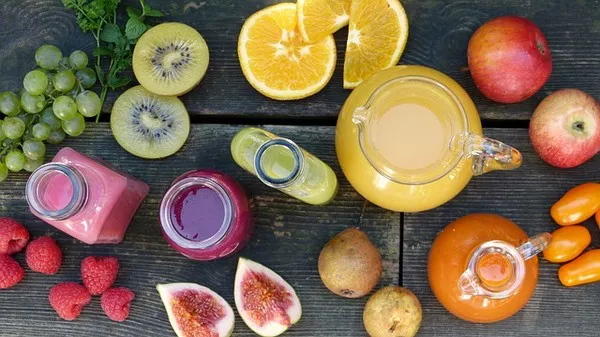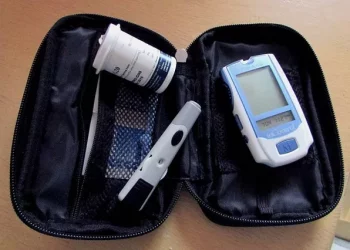Diabetes is a chronic condition that affects millions of people worldwide, and managing blood sugar levels is crucial for those living with this condition. One of the key elements in maintaining balanced blood sugar levels is adhering to a well-structured diet. While many people with diabetes are concerned about consuming fruit due to its natural sugar content, many fruits can be enjoyed in moderation and offer substantial health benefits. In fact, certain fruits are particularly beneficial for those with diabetes due to their low glycemic index (GI), high fiber content, and abundance of essential vitamins, minerals, and antioxidants.
This article explores the healthiest fruits for diabetics, focusing on those that are most effective in helping regulate blood sugar levels and promote overall health. It also addresses the importance of portion control and the role of different fruits in a balanced diabetes diet.
Understanding the Glycemic Index
Before diving into the specifics of the healthiest fruits for diabetics, it’s essential to understand the concept of the glycemic index (GI). The GI is a ranking of foods based on how they affect blood sugar levels. Foods with a high GI cause rapid spikes in blood sugar, whereas those with a low GI lead to slower, more gradual increases. For diabetics, consuming low-GI foods is crucial for preventing blood sugar spikes and maintaining stable glucose levels.
Fruits generally fall into various GI categories. Some fruits are low-GI, which means they release sugar into the bloodstream more slowly, making them ideal choices for people with diabetes. Others are higher on the GI scale, and their consumption should be limited or carefully managed.
Why Fruit Is Beneficial for Diabetics
Fruits are rich in essential nutrients such as vitamins (particularly vitamin C), antioxidants, and fiber. These nutrients help improve overall health and may also have specific benefits for diabetics, such as:
High Fiber Content: Fiber plays a crucial role in managing diabetes. It helps regulate blood sugar levels by slowing the absorption of sugar into the bloodstream. Additionally, fiber contributes to a feeling of fullness, which can aid in weight management—important for people with type 2 diabetes.
Antioxidants: Many fruits contain antioxidants, which protect cells from oxidative stress and inflammation. Oxidative stress is associated with the progression of diabetes and its complications, including heart disease and nerve damage.
Vitamins and Minerals: Fruits are an excellent source of vitamins and minerals, such as vitamin C and potassium, which support immune health, reduce the risk of cardiovascular complications, and promote overall well-being.
Hydration: Fruits have high water content, which can help maintain hydration and contribute to kidney health—a concern for individuals with diabetes, as the kidneys are often affected by the condition.
The Healthiest Fruits for Diabetics
Below, we discuss some of the healthiest fruits for diabetics, focusing on their glycemic index, nutritional content, and specific benefits for blood sugar regulation.
1. Berries (Strawberries, Blueberries, Blackberries, Raspberries)
Berries are often considered among the healthiest fruits for diabetics. They are low in sugar and high in fiber, which helps to regulate blood sugar levels. Berries also have a low glycemic index, making them an excellent choice for anyone looking to keep their blood sugar in check.
Nutritional Profile: Berries are packed with antioxidants, including anthocyanins, which are known for their anti-inflammatory properties. They also provide a good amount of vitamin C, manganese, and fiber.
Blood Sugar Benefits: The high fiber content of berries slows the absorption of sugar, which prevents sharp increases in blood glucose levels. Additionally, research has shown that the antioxidants in berries can help improve insulin sensitivity, a key factor in managing type 2 diabetes.
Recommended Consumption: A small handful (about 1/2 cup) of mixed berries can be enjoyed daily. They can be added to oatmeal, yogurt, or smoothies for a nutritious snack or meal.
2. Apples
Apples are another excellent fruit choice for diabetics. They have a relatively low glycemic index and are a great source of soluble fiber, which helps control blood sugar levels by slowing digestion and absorption.
Nutritional Profile: Apples are rich in fiber, particularly pectin, which has been shown to lower cholesterol and improve gut health. They also provide vitamin C and various antioxidants.
Blood Sugar Benefits: The soluble fiber in apples helps regulate blood sugar levels by improving insulin sensitivity. Furthermore, apples contain polyphenols, which may help reduce the risk of diabetes complications.
Recommended Consumption: A medium-sized apple (about 150 grams) is an ideal portion size. For added benefit, eat the apple with the skin on, as this increases the fiber content.
3. Pears
Pears are another fruit that is rich in fiber, especially soluble fiber, which aids in blood sugar regulation. Pears are low-GI, which means they have a minimal effect on blood glucose levels.
Nutritional Profile: Pears are a good source of fiber, vitamin C, and potassium. They also contain antioxidants such as flavonoids, which help reduce inflammation and oxidative stress.
Blood Sugar Benefits: The fiber in pears slows the absorption of sugar and promotes healthy digestion. Additionally, pears can help improve insulin sensitivity, which is beneficial for managing type 2 diabetes.
Recommended Consumption: One medium pear (about 178 grams) is an appropriate serving. Pears can be eaten raw or added to salads, smoothies, or desserts.
4. Cherries
Cherries are low-GI fruits that offer several benefits for diabetics. They are rich in antioxidants, which help fight inflammation and oxidative stress—a key concern for those with diabetes.
Nutritional Profile: Cherries are an excellent source of vitamin C, potassium, and fiber. They are also packed with anthocyanins, which have anti-inflammatory effects.
Blood Sugar Benefits: The fiber content in cherries helps slow the release of sugar into the bloodstream, while the antioxidants help improve insulin sensitivity and reduce the risk of diabetic complications.
Recommended Consumption: A small handful of cherries (about 10-12) is a good serving size. Fresh or frozen cherries can be enjoyed on their own or added to smoothies and desserts.
5. Grapefruit
Grapefruit is a citrus fruit that has a low glycemic index and is known for its ability to help regulate blood sugar levels. Its high water content and nutrient profile make it a healthy addition to a diabetic-friendly diet.
Nutritional Profile: Grapefruit is rich in vitamin C, fiber, and antioxidants, particularly flavonoids like naringenin, which have been shown to have anti-inflammatory and blood sugar-regulating properties.
Blood Sugar Benefits: Grapefruit has a low GI and is a rich source of soluble fiber, which helps regulate blood sugar levels. Some studies have shown that grapefruit may also improve insulin resistance, making it beneficial for those with type 2 diabetes.
Recommended Consumption: Half a grapefruit (about 100 grams) can be eaten as a snack or added to salads. It can also be juiced, though it’s best to avoid adding extra sugar.
6. Peaches
Peaches are sweet, juicy fruits that are low in glycemic index and provide a variety of health benefits. They are rich in vitamins, antioxidants, and fiber, making them an excellent fruit choice for people with diabetes.
Nutritional Profile: Peaches contain vitamins A and C, potassium, and fiber. They also have antioxidants such as beta-carotene, which support immune health and skin health.
Blood Sugar Benefits: The high fiber content of peaches helps slow the digestion of sugars and maintain stable blood sugar levels. Peaches also contain polyphenols, which have anti-inflammatory properties and may help reduce the risk of complications associated with diabetes.
Recommended Consumption: One medium peach (about 150 grams) is a great portion size. Peaches can be eaten fresh, grilled, or added to smoothies.
7. Plums
Plums are low-GI fruits that are packed with nutrients and antioxidants. They are particularly beneficial for people with diabetes due to their high fiber content and ability to help regulate blood sugar levels.
Nutritional Profile: Plums are a good source of vitamin C, fiber, and antioxidants, including anthocyanins and phenolic compounds, which help protect against oxidative stress.
Blood Sugar Benefits: The fiber in plums helps control blood sugar levels by slowing sugar absorption. The antioxidants in plums also support overall health by reducing inflammation and improving insulin sensitivity.
Recommended Consumption: One to two plums (about 100 grams) per day is a healthy serving size. Plums can be enjoyed fresh or dried (prunes), which are also beneficial for digestive health.
Conclusion
Fruits can and should be included in a diabetic diet, but it’s essential to choose the right fruits and consume them in moderation. Low-GI fruits such as berries, apples, pears, cherries, grapefruit, peaches, and plums offer numerous health benefits for people with diabetes, including blood sugar regulation, antioxidant protection, and improved insulin sensitivity.
By incorporating these fruits into a balanced diet, diabetics can enjoy delicious and nutritious foods that help manage their condition and support overall health. It’s also crucial to remember that portion control is key—while these fruits are healthy, consuming them in appropriate quantities is essential for keeping blood sugar levels in check. As always, it is recommended to consult with a healthcare provider or a registered dietitian before making significant changes to your diet, especially if you have diabetes.
Related topics:
What are Good Fiber Foods for Diabetics























